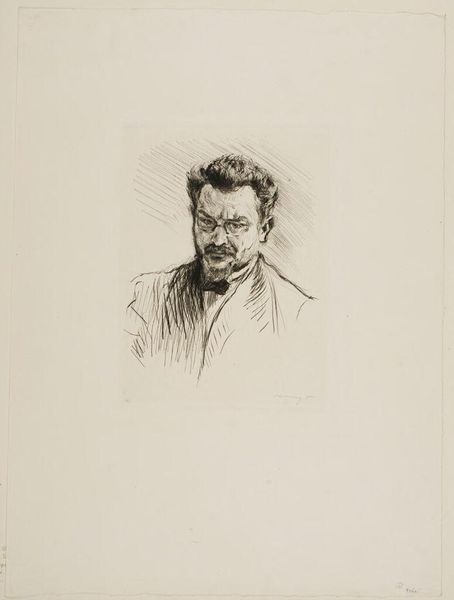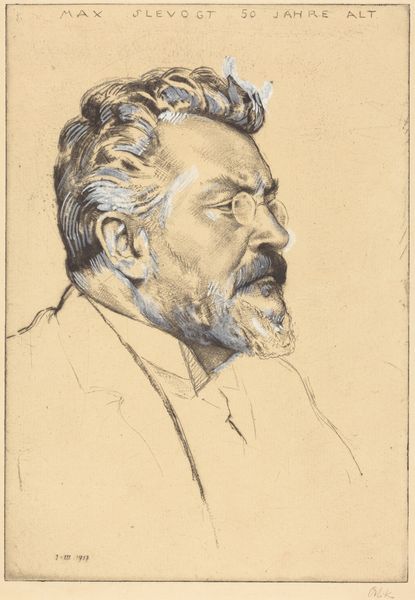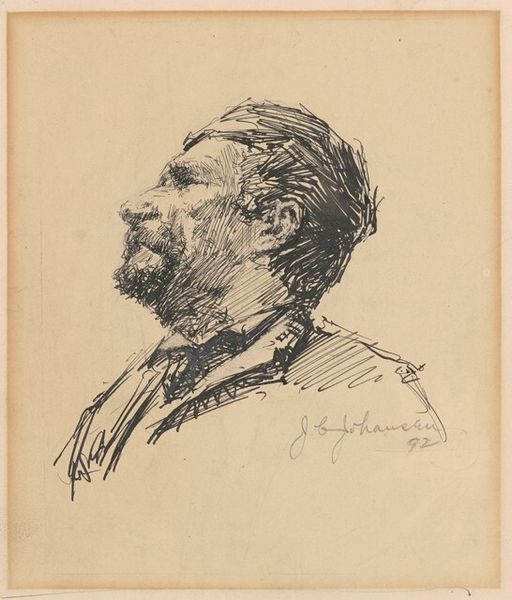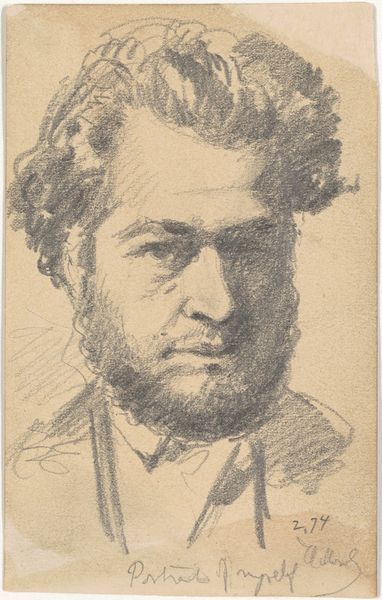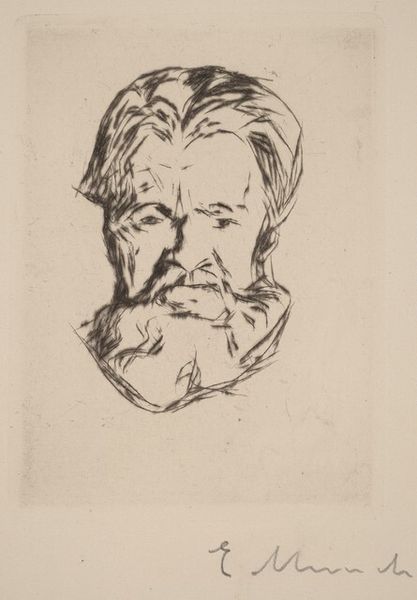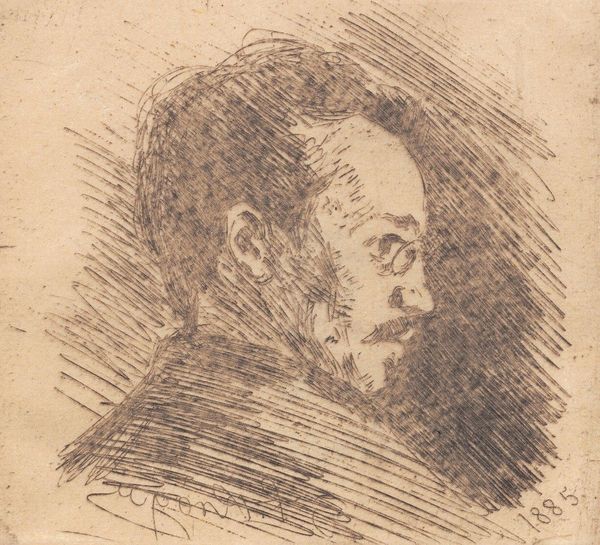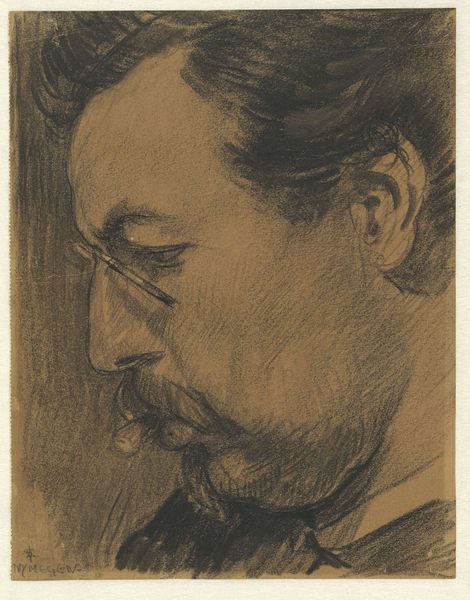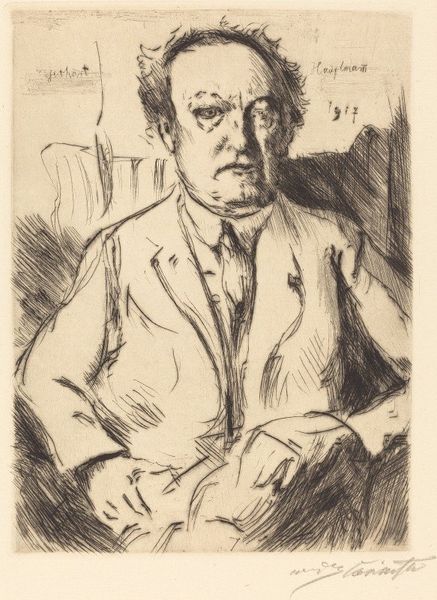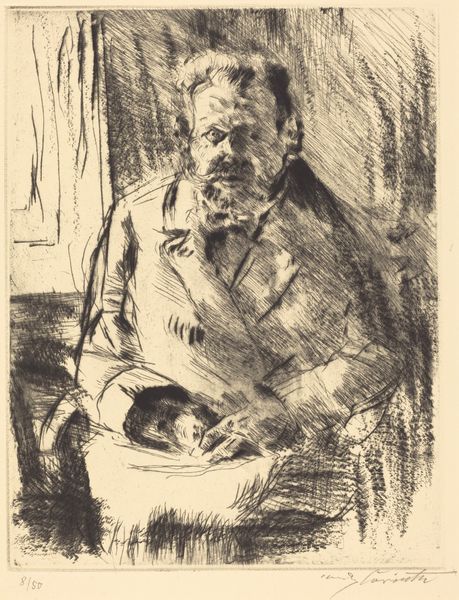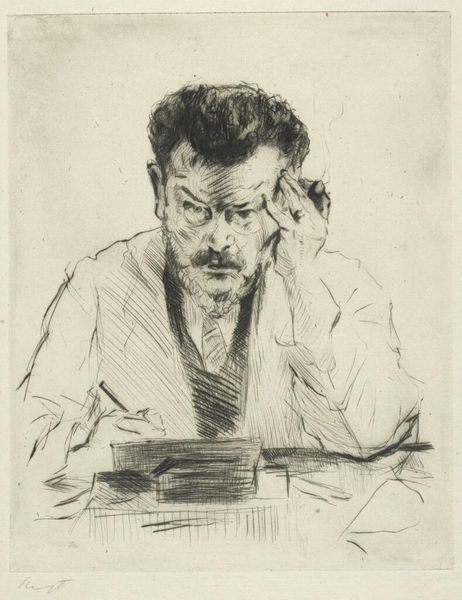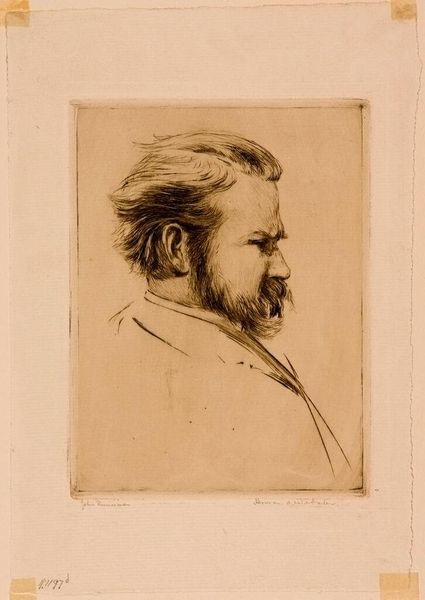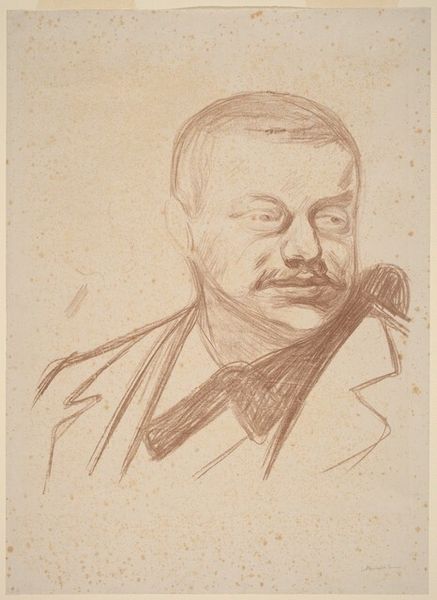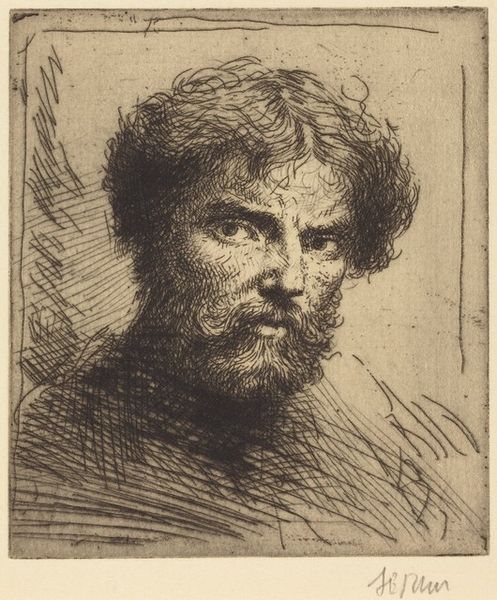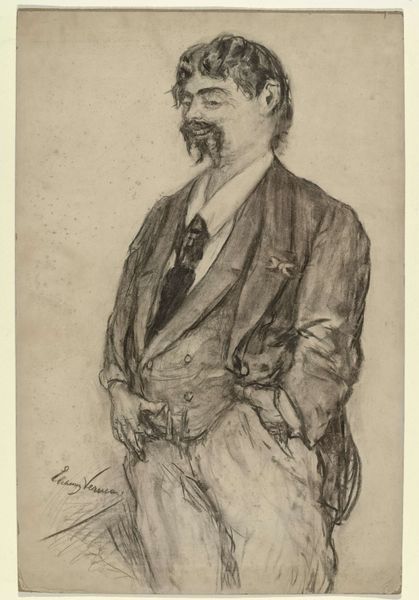
drawing, print, ink
#
portrait
#
drawing
#
self-portrait
# print
#
ink
#
pencil drawing
#
expressionism
#
portrait drawing
Copyright: National Gallery of Art: CC0 1.0
Max Slevogt made this self-portrait using an etching technique. Etching involves drawing with a sharp needle on a metal plate covered with a waxy ground. The plate is then bathed in acid, which bites into the exposed lines. The character of etching lies in the contrast between the crispness of the lines and the softness of the surrounding paper. See how Slevogt uses dense clusters of lines to build up shadows on his face and clothing, giving form and depth to his features. The loose, sketchy style of the etching lends a sense of immediacy. Etching has a unique place in the history of printmaking, as it is more suited to individual artistic expression than commercial reproduction. While the printmaking was sometimes outsourced, in this instance it was handled entirely by the artist. This collapsing of design and fabrication is something we also see in craft traditions, where the maker's hand is directly visible in the finished product. In looking closely at works like this, we recognize the material and the process behind it, and we can move beyond thinking about hierarchies of art versus craft.
Comments
No comments
Be the first to comment and join the conversation on the ultimate creative platform.
